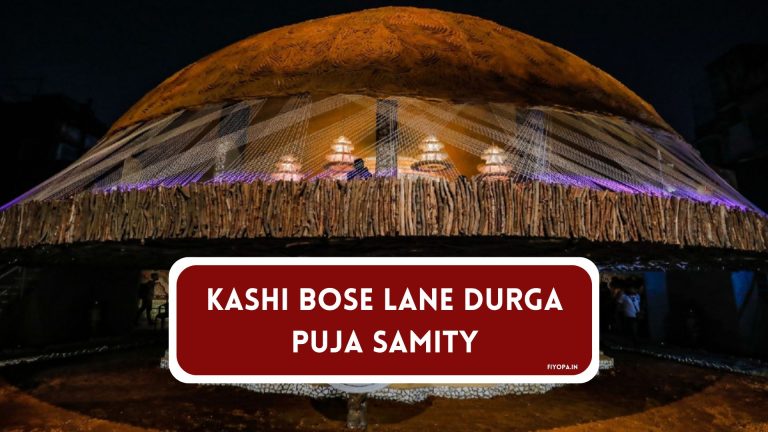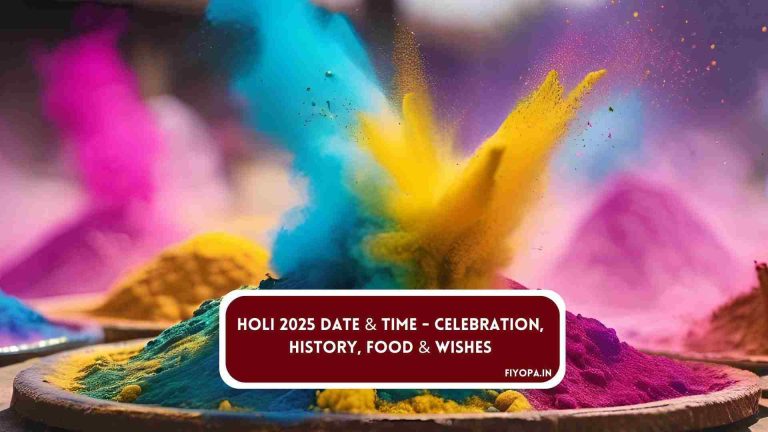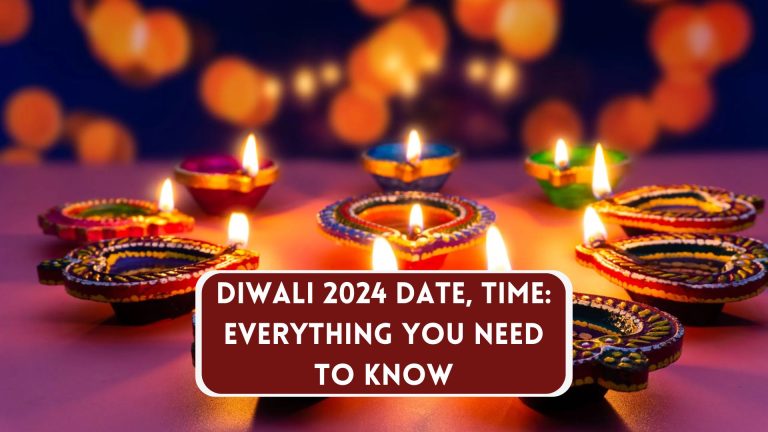Bhoomi Puja Guide 2024: Perform the Ritual with Expert Vedic Pandits

Bhoomi Puja, also known as Bhoomi Poojan, holds immense significance in construction activities. It is a traditional Indian ritual performed before commencing any construction work on a site. The ceremony is believed to seek the blessings of the Earth and ensure prosperity for the upcoming project.
The rituals involved in Bhoomi Puja are deeply rooted in ancient traditions and hold great spiritual and cultural importance. This ceremony marks the beginning of a new venture, especially.
Performing Bhoomi Puja not only signifies respect for the land but also aims to invoke divine blessings for successful completion and enduring prosperity.
Bhoomi Puja Rituals and Steps
The process of conducting Bhoomi Puja involves several essential steps that are steeped in tradition. Firstly, choosing an auspicious day and time is crucial; this requires consulting with a priest or astrologer to determine favourable dates based on Vedic astrology.
On the chosen day, prayers are offered to Lord Ganesha and other deities seeking their blessings for smooth progress during construction activities. Afterward, a small pit is dug at the designated spot on the construction site where grains, flowers, coins, and other symbolic items are placed as offerings to Mother Earth.
Following this offering, sacred mantras are chanted by priests while performing various rituals around the pit. The entire process symbolizes gratitude towards nature’s resources while seeking permission from Mother Earth to begin building on her surface.
For those planning to perform Bhoomi Puja in 2024 as part of their house construction project or any other real estate endeavor, it’s important to follow these age-old customs meticulously.
Bhumi Pujan in 2024

Auspicious Dates:
Performing Bhoomi Puja for house construction is considered highly auspicious. In 2024, the best dates for conducting this ceremony are in May. The month of May offers several favorable days according to the Hindu calendar, such as Akshaya Tritiya and other significant dates that are believed to bring prosperity and good fortune to the new property.
It’s essential to consult a Hindu priest or astrologer to determine the most suitable date based on individual horoscopes and astrological alignments. This ensures that the Bhumi Pujan is performed at an optimal time, aligning with cosmic energies for overall well-being and success in the construction project.
Best Time:
The ideal time for performing Bhoomi Puja is during specific planetary configurations or Muhurats (auspicious timings). These Muhurats are calculated based on Vedic astrology principles, considering factors like the position of celestial bodies, lunar phases, and planetary movements. For example, mornings before noon are generally preferred for conducting Bhumi Pujan as they signify freshness and new beginnings.
Choosing an appropriate time for Bhumi Pujan is crucial as it sets a positive tone for the entire construction process. It’s believed that performing this ritual during favorable planetary positions can help mitigate potential obstacles and ensure smooth progress throughout the building phase.
Astrological Considerations:
In 2024, certain astrological considerations play a significant role in determining when to conduct Bhoomi Puja. Factors such as lunar months (Tithis), weekdays (Vaar), Nakshatras (lunar constellations), Yoga (auspicious combinations), and Karana (half Tithis) need careful evaluation before finalizing a date.
Importance of Bhoomi Puja For House Construction
Blessings and Positive Energy:
Bhoomi Puja, also known as Bhumi Pujan, holds immense importance in the realm of house construction. This ritual is considered crucial as it is believed to bring blessings and positive energy to the land where the new home will be built. By performing this ceremony, individuals seek the divine favor of Lord Ganesha, who is revered as the remover of obstacles and bestower of good fortune.
The process involves offering prayers to Mother Earth (Bhoomi Devi) seeking her permission and forgiveness for disturbing her during the construction. The act symbolizes a harmonious relationship between humans and nature, emphasizing respect for the environment. Through this ritual, people aim to invite auspiciousness into their lives while fostering a sense of gratitude towards nature.
Cultural Significance:
Apart from its spiritual connotation, Bhoomi Puja also carries significant cultural importance. It serves as an occasion for families to come together and partake in a sacred event that marks the beginning of a new phase in their lives. The ceremony not only signifies reverence towards one’s ancestors but also reflects adherence to age-old traditions passed down through generations.
In many cultures across India, Bhoomi Puja is performed with great zeal and devotion. It symbolizes seeking protection from negative forces while invoking divine blessings for prosperity and well-being in the new dwelling. It fosters unity among family members by involving them in an ancient practice that strengthens familial bonds.
Bhoomi Puja: Historical or Scriptural Context of Bhoomi Pujan
Ancient Texts:
Bhoomi Puja finds its roots in ancient Indian scriptures and texts, such as the Vedas and the Puranas. These sacred texts emphasize the significance of performing rituals to seek blessings from deities before commencing any construction on the land. The practice is deeply embedded in religious beliefs and cultural traditions, dating back thousands of years.
Performing Bhoomi Puja is not only a customary tradition but also holds immense spiritual importance. It symbolizes reverence for the Earth, acknowledging it as a source of sustenance and prosperity.
Generational Traditions:
The historical context reveals that Bhoomi Puja has been passed down through generations as an essential ritual preceding any construction activity. This tradition has been meticulously preserved by families and communities, ensuring that respect for the Earth remains at the core of various activities related to land use and development.
Ancient teachings have emphasized that seeking divine blessings through Bhoomi Puja fosters harmony between humans, nature, and celestial forces. This understanding reflects a deep-rooted connection with nature’s elements—a concept integral to many indigenous cultures around the world.
How To Perform A Bhoomi Pujan?
Step-By-Step Guide:
Bhoomi Puja, also known as bhumi pujan or land worship, is a traditional Hindu ceremony performed before the construction of any structure on a piece of land. The first step in performing bhoomi puja involves selecting auspicious date and time according to the Hindu calendar. Once the date is set, preparations for the ceremony begin.
The next step in preparing for bhoomi pujan involves cleaning and purifying the chosen site. This is done by clearing away any debris or garbage and then sprinkling water mixed with cow dung over the area. It’s believed that this purification process cleanses the land spiritually and prepares it for receiving divine blessings during the ritual.
Rituals and Offerings:
During bhoomi pujan, several rituals are performed to invoke blessings from deities such as Lord Ganesha, Varuna (the God of Water), Bhumi Devi (Goddess Earth), and Vastu Purusha (the deity of directions). Offerings such as flowers, incense sticks, turmeric, vermillion powder, rice grains, fruits, sweets, and coconuts are made to these deities while chanting sacred mantras.
After invoking blessings from various deities through these offerings and mantras, a symbolic representation of Mother Earth is created using nine types of grains like wheat, barley seeds etc., placed at specific spots around the site. This act symbolizes seeking permission from Mother Earth to use her resources for construction purposes while promising to respect nature throughout this endeavor.
Bhoomi Puja: Significance of Each Ritual Step in Bhoomi Pujan
Symbolic Meaning:
The bhoomi puja ceremony involves several ritual steps, each carrying a profound symbolic meaning. For instance, the act of digging the soil signifies breaking ground for new beginnings. This action symbolizes preparing the land to receive positive energies and blessings from the divine.
Performing rituals such as sprinkling holy water (Gangajal) or offering grains into the earth represents nurturing and nourishing the land. These actions are believed to invoke fertility and prosperity for future construction projects on that site.
Invoking Positive Energies:
During bhoomi pujan, specific rituals are performed to invoke positive energies and seek divine blessings for a successful and harmonious construction process. The chanting of mantras, lighting incense sticks, and offering flowers are all aimed at creating an atmosphere filled with positivity, purity, and spiritual grace.
The placement of auspicious items like coins, gold, silver, or precious stones within the foundation pit serves as a gesture to seek protection from negative forces while inviting abundance into the project’s space.
Spiritual Intentions:
Every ritual step during bhoomi pujan is infused with spiritual intentions that go beyond mere physical actions. For example,
- The drawing of rangoli patterns around the site is intended to welcome Goddess Lakshmi -the deity associated with wealth.
- Placing idols or images of deities at strategic points signifies seeking their guidance throughout every stage of construction.
- Lighting lamps symbolizes dispelling darkness both literally and metaphorically by embracing knowledge and wisdom.
Read Also: Karthika Masam: Significance of Kartika Purnima & Rituals…
Steps From Bhoomi Pujan Till Griha Pravesh
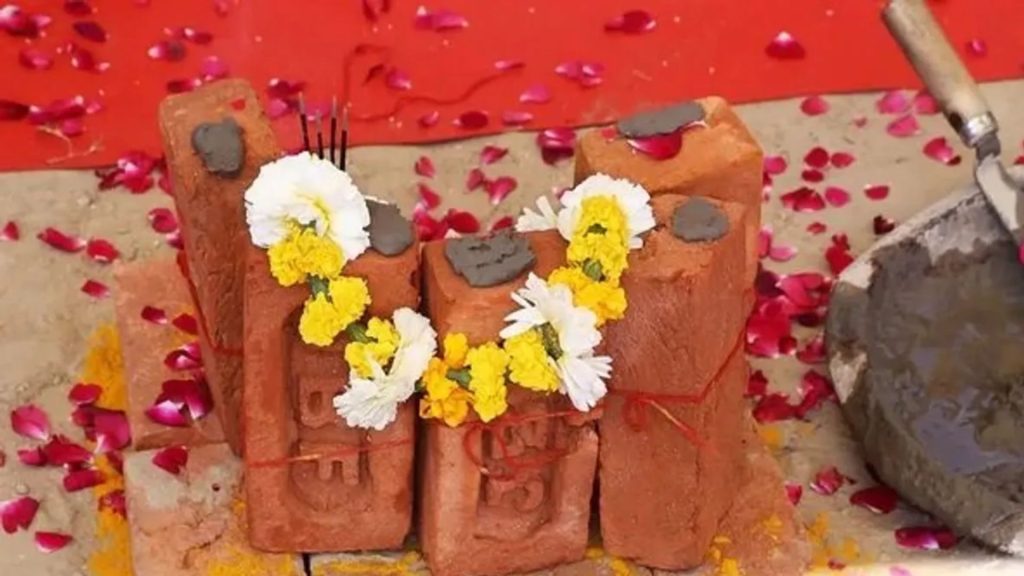
Bhoomi Pujan:
After the Bhoomi Puja or ground-breaking ceremony, the construction process begins. The priest determines an auspicious day for the event based on Hindu astrology and conducts a puja to seek blessings from Goddess Earth.
The construction process typically starts with digging the ground where the house will be built. This marks the beginning of a new phase in building your dream home.
March Towards Completion:
Following the Bhoomi Pujan, several days are spent preparing for laying down the foundation of your new abode. The significance of each day is marked by various rituals and ceremonies that aim to bring prosperity and good fortune to your future home.
During this period, it’s common to adorn the site with vibrant flowers and aromatic leaves, symbolizing growth, purity, and positivity as you progress towards completing your dream dwelling.
Housewarming – Griha Pravesh:
Once construction is complete, it’s time for one of the most significant events in this journey – Griha Pravesh or housewarming. This ceremony celebrates entering and inhabiting your newly constructed residence after all necessary rituals have been performed post-Bhoomi Pujan.
On this auspicious occasion, family members conduct prayers seeking blessings from deities for peace, prosperity, and happiness in their new home. It’s a joyous moment filled with tradition and cultural significance as you embark on this exciting chapter in life.
Bhoomi Puja: Samagri For Bhumi Pujan
Essential Items:
Bhoomi Puja, also known as Bhumi Pujan, is a significant Hindu ritual that marks the beginning of construction on a new piece of land. The ceremony requires several samagri or ritualistic items for its proper execution. These items hold symbolic importance and are believed to bring blessings and prosperity to the land and its future inhabitants.
During Bhumi Pujan, some essential items include phalgun, betel leaves, ghee, mangoes, incense sticks, raw rice, and harm (a type of sacred thread). Each item has its own significance in the ceremony. For example, ghee symbolizes purity and is used in various rituals due to its purifying properties.
The use of these specific items during Bhoomi Puja signifies different aspects such as fertility (mangoes), purity (ghee), auspiciousness (betel leaves) and prosperity (raw rice). Understanding the symbolism behind each item adds depth to the spiritual significance of the entire ceremony.
Symbolic Meaning:
The presence of phalgun, which includes flowers like marigold and rose petals along with other fragrant flowers like jasmine or champa, represents beauty and grace. Similarly, offering betel leaves symbolizes respect while presenting ghee signifies cleansing impurities within oneself.
Moreover,incense sticks, when lit during the ceremony produce aromatic smoke that wafts through the air signifying spirituality. Additionally,raw rice, often used as an offering in many Hindu rituals including Bhumi Pujan represents sustenance while harm denotes protection from negative energies.
Mantras For Bhumi Pujan
Significance:
During bhoomi pujan, specific mantras are chanted to seek divine blessings for the land and the upcoming construction. These mantras hold immense significance in Hindu rituals as they are believed to purify the environment and create a positive aura. Chanting mantras during this ceremony is thought to invoke the blessings of deities, seeking their guidance and protection for the new home.
The chanting of mantras during bhoomi pujan is considered crucial as it is believed to infuse positivity into the surroundings, ensuring that the house becomes a hub of happiness, prosperity, and peace. The vibrations created by reciting these sacred verses are said to cleanse any negative energies from the land, making it auspicious for construction.
Benefits:
Reciting specific mantras during bhoomi pujan holds various benefits. One such mantra often chanted during this ceremony is “Om Vasundharaya Vidmahe Bhutadhatraya Dhimahi Tanno Bhumih Prachodayat.” This mantra venerates Mother Earth and seeks her blessings for a successful construction process. Chanting this mantra is believed to establish a strong connection with nature and foster harmony between humans and their environment.
Another powerful mantra recited during bhoomi pujan is “Vastu Purusha Mandala.” This mantra aims at appeasing Vastu Purusha –the deity presiding over directions–to ensure that all elements within the home remain balanced. By invoking his blessings through this chant, individuals hope to ward off any negative influences while promoting overall well-being within their homes.
Cost Implications of Conducting Bhoomi Pujan
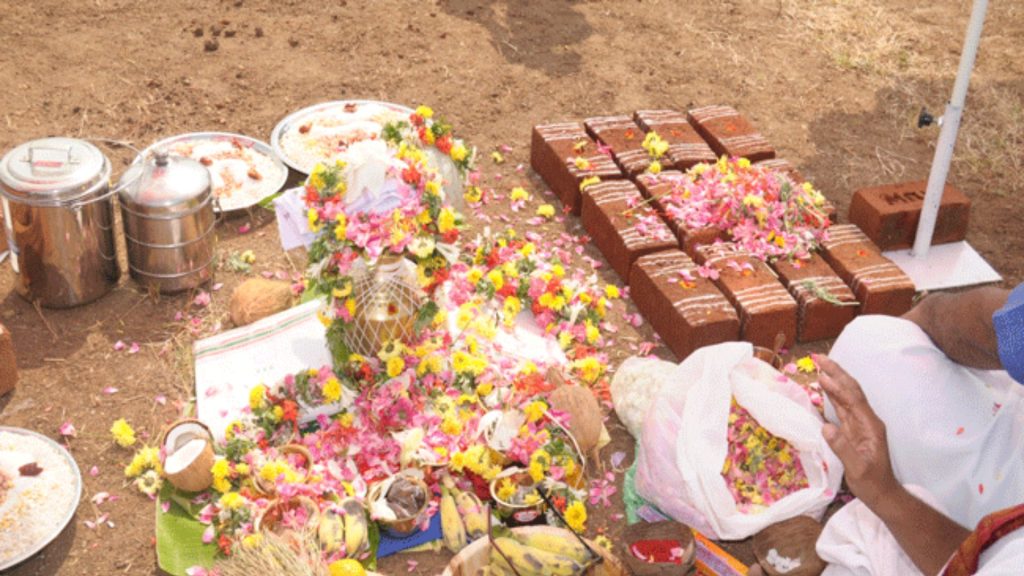
Factors Affecting Costs:
The cost of conducting a traditional Bhoomi Pujan can vary based on several factors. The primary determinants include the location, scale, and rituals involved in the ceremony. For instance, if the ceremony is held in a metropolitan area, the expenses are likely to be higher compared to rural areas due to increased demand for priests and materials.
Moreover, the scale of the event plays a crucial role in determining its overall cost. Larger ceremonies with extensive guest lists may require more elaborate arrangements, leading to higher expenses for catering, decorations, and other essentials. Specific rituals or customs incorporated into the ceremony can also influence costs significantly.
Another vital factor that affects costs is the selection of materials and offerings required for various rituals during Bhoomi Pujan. Depending on individual preferences or religious traditions followed by different families or communities, these materials’ quality and quantity might differ substantially.
Cost-Effective Alternatives:
In some cases where budget constraints are prevalent or individuals seek more economical options without compromising tradition’s sanctity, there are cost-effective alternatives available for performing Bhoomi Pujan. One such alternative involves organizing smaller-scale ceremonies with limited guests and simplified arrangements.
Furthermore, opting for locally sourced materials and utilizing existing resources creatively can help reduce expenses while preserving essential elements of traditional Bhoomi Pujan. For example: using flowers from one’s garden instead of purchasing them from florists could be a practical approach towards cost reduction without sacrificing authenticity.
Seeking guidance from experienced priests or religious scholars regarding flexible approaches within customary practices can aid in identifying alternative methods that align with both spiritual beliefs and financial considerations.
Read Also: Durga Puja: Know All About The Durga Puja…
Navarathna Installation
Astrological Significance:
The Navarathna installation during Bhoomi Pujan involves placing nine gemstones representing the celestial bodies in Vedic astrology. These gemstones include ruby, pearl, coral, emerald, yellow sapphire, diamond, blue sapphire, hessonite garnet, and cat’s eye. Each stone is believed to have a specific influence on the environment and individuals residing in the house.
The astrological significance of these gemstones lies in their ability to harness positive energies and counteract negative influences based on the positions of planets at the time of construction. For instance:
- Ruby represents the Sun and symbolizes power and authority.
- Pearl, associated with the Moon, signifies mental peace and emotional stability.
- Yellow sapphire is linked with Jupiter and promotes wisdom and prosperity.
These stones are carefully selected based on an individual’s birth chart or horoscope to ensure that they align with one’s planetary positions for maximum benefits.
Benefits of House Construction
Incorporating Navarathna during Bhoomi Pujan can bring several benefits to a new home. The placement of these gemstones is believed to harmonize cosmic energies within the living space which may lead to increased harmony among family members as well as overall well-being. Additionally:
- Ruby can enhance vitality while promoting leadership qualities.
- Blue sapphire may help alleviate obstacles by bringing clarity and focus.
- Emerald contributes to intellectual growth by fostering better communication skills.
By strategically placing these gems within a home under construction during Bhoomi Pujan ceremony ensures that its inhabitants receive favorable influences from celestial bodies throughout their lives.
Enhancing Positive Energies
Navarathna installation serves as a means of enhancing positive energies within your new home.
Regional Variations in Bhoomi Pujan Practices
What to Expect
During a bhoomi puja ceremony, attendees can expect various rituals and customs based on regional variations. In the northern parts of India, the ceremony may involve specific traditions such as offering prayers to Lord Ganesha and seeking his blessings for a successful start to the construction project. On the other hand, in the northeastern region of India, it is customary to perform the bhoomi puja in the northeast corner of the plot or land.
Participants can anticipate ritualistic activities like drawing auspicious symbols with turmeric and vermilion at the site. These symbols are believed to bring good luck and ward off negative energies from the area where construction will take place.
Etiquette and Dress Code
For individuals attending a bhoomi puja, it’s essential to adhere to certain etiquette and dress codes. Participants are expected to dress modestly and conservatively as a sign of respect for the sacred nature of this event. This typically involves wearing traditional attire such as sarees for women or kurta-pajamas for men.
Moreover, attendees should maintain a respectful demeanor throughout the ceremony by refraining from engaging in any disruptive behavior that could detract from its solemnity. It’s also important for guests not directly involved in performing rituals during bhoomi pujan ceremonies to observe quietly without interrupting or causing distractions.
Active Participation
Individuals attending a bhoomi puja have an opportunity to actively participate in various ways. They can engage by assisting with setting up ceremonial items, arranging seating areas for elders or priests, or helping distribute prasad (blessed food) among all present at the event.
Preparation for Attendees: What to Expect and How to Prepare
Post-Ritual Practices:
After the bhoomi puja ceremony, there are post-ritual practices and guidelines that attendees should follow. It is customary to ensure that the sacred space created during the ceremony is maintained and cared for appropriately. This may involve regular cleaning, decorating with fresh flowers or rangoli, and keeping it free from clutter or disturbances.
The positive energies invoked during bhoomi puja are believed to be preserved by maintaining a harmonious environment within the sacred space. Those who attended the ceremony should strive to uphold this positivity through their actions and thoughts in that area. By doing so, they contribute to sustaining the sanctity of the place where bhoomi puja was performed.
Preservation of Positive Energies:
Understanding how to preserve the positive energies invoked during bhoomi puja is crucial for those involved in or attending the ritual. The maintenance of a serene atmosphere at the site can help retain these positive vibrations. Following ethical conduct while being present in this consecrated area contributes significantly towards preserving its sanctity.
In some cases, individuals may choose to perform meditation or recite prayers regularly within this space as part of efforts to uphold its sanctity and enhance positivity. These activities aid in maintaining a connection with these spiritual energies invoked during bhoomi puja, thereby ensuring their continued presence at that location.
Post-Ritual Practices After Bhoomi Pujan
Booking Vedic Pandits
The convenience of booking expert Vedic Pandits is unmatched. These knowledgeable priests perform the rituals with precision and authenticity, ensuring a spiritually enriching experience for everyone involved. By engaging professional Vedic Pandits, individuals can ensure that every aspect of the ceremony aligns with traditional practices.
SmartPuja offers a seamless process for booking expert Vedic Pandits who specialize in conducting bhoomi pujan ceremonies. Their services cater to those seeking an authentic and well-organized ritual experience. With SmartPuja’s assistance, individuals can rest assured that the ceremony will be conducted meticulously, enhancing the overall spiritual significance of bhoomi pujan.
Professional Assistance
Professional assistance plays a crucial role in enhancing the spiritual experience of bhoomi pujan. Expert guidance ensures that all rituals are performed correctly, eliminating any room for error or oversight during the ceremony. This not only enhances the sanctity of the ritual but also creates an environment conducive to invoking positive energies while dispelling any negative influences.
SmartPuja’s services encompass various aspects aimed at elevating the entire spiritual journey associated with bhoomi pujan. From arranging necessary items for rituals to providing knowledgeable priests who lead each aspect of the ceremony, their professional support ensures that participants can immerse themselves fully in this sacred tradition without worrying about any logistical or procedural details.
Book Expert Vedic Pandits for Bhumi Pujan with SmartPuja
Sustainable Offerings
Incorporating eco-friendly practices is crucial. Instead of using materials that harm the environment, one can opt for sustainable alternatives. For instance, instead of plastic or non-biodegradable items, eco-friendly options like clay lamps and organic flowers can be used as offerings during the ritual. These choices not only honor the tradition but also minimize environmental impact.
The use of traditional materials such as cow dung, turmeric, and rice can also be emphasized during Bhoomi Puja. These items are biodegradable and have been used historically in rituals due to their natural properties. By opting for these materials over synthetic ones, individuals can ensure that their rituals align with eco-conscious principles while upholding cultural traditions.
Minimizing Environmental Impact
To further reduce the environmental impact during Bhoomi Puja, individuals can focus on sustainable practices when performing the ritual itself. For example, utilizing solar-powered lights instead of traditional oil lamps not only reduces carbon emissions but also symbolizes a connection with the sun – a source of energy and vitality according to Vedic beliefs.
In addition to this shift towards sustainability in material usage and rituals themselves, individuals may consider planting trees or donating to environmental causes as part of their post-puja activities. This proactive approach ensures that Bhoomi Puja becomes an opportunity not just for seeking blessings related to health and wealth, but also for giving back to nature.
Environmental Considerations for Bhoomi Pujan
Importance of Mother Earth
Bhoomi Puja, or Bhumi Pujan, is a significant ritual in Hinduism that reveres the mother earth. This ceremony acknowledges the importance of nature and land, recognizing its vital role in sustaining life. The practice involves seeking blessings from the earth before commencing any construction or agricultural activities, emphasizing respect for the environment.
The ceremony emphasizes gratitude towards nature and seeks to ensure harmony between human activities and natural elements. It serves as a reminder of our responsibility to preserve and protect the environment, promoting sustainable practices that benefit both present and future generations.
Agricultural Purposes
In many instances, Bhoomi Puja is performed before initiating agricultural activities on a piece of land. By conducting this ritual, individuals express their reverence for the soil’s fertility and seek blessings for bountiful harvests. This tradition highlights the deep connection between humans and land while acknowledging that agricultural processes are intertwined with environmental factors.
Performing Bhumi Pujan before cultivating crops symbolizes an understanding of how human actions impact not only individual lives but also broader ecosystems. It underscores the need to consider environmental implications when utilizing natural resources for sustenance.
Conclusion:
Bhoomi Puja, a traditional Indian ritual before construction, holds profound significance in cultural, spiritual, and environmental aspects. Rooted in ancient texts, it symbolizes gratitude and respect for the Earth. The meticulous steps, astrological considerations, and cultural importance highlight its enduring nature.
The ceremony’s holistic approach involves seeking divine blessings, fostering positive energies, and ensuring a prosperous construction process. Astrological elements, including auspicious dates and Navarathna installation, add layers of significance.
Read Also: Diya Lighting Ceremony: Importance of lighting a Diya

